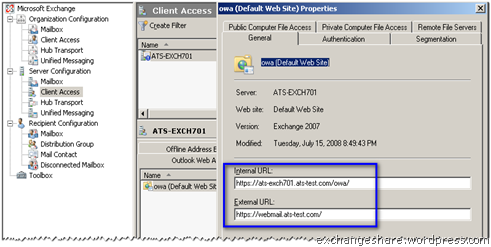Regarding the overall patching experience, we have addressed the issue of Exchange 2007 managed services might time out during certificate revocation checks. While we will have a full list of issues fixed when the Rollup releases, some of major issues are:
- CDCR: Need an option to apply ELC policy to only the root instead of applying it recursively to root and all subfolders
- CDCR: Add generatePublisherEvidence enabled="false" to Exchange Services Config Files
- SCR does not copy logs in a disjoint namespace scenario
- SCR cannot be enabled when DNS suffixes differ on source/target in disjoint namespace scenarios
- Exchange 2007 CAS cannot copy the OAB from the OAB share on Windows Server 2008-based Exchange 2007 CCR clusters
- Messages get stuck in outbox on Windows Mobile 6.1 devices When using CAS proxy
- CDCR: MSI patching doesn't update logon.aspx if the file is modified by customer












